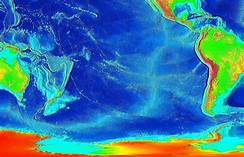New Insights Involved In The Movement Of The Earth’s Tectonic Plates:

A recent study by a team of scientists at Goa-based National Centre for Polar and Ocean Research (NCPOR) has brought new insights into the critical processes involved in the movement of the earth’s tectonic plates.
- The buoyant rising of hot and low-density magma or plumes from the Earth’s interior towards the surface leads to extensive volcanism and the creation of seamounts and volcanic chains above the ocean floor.
- However, many times, the magma’s buoyant force is not sufficient to pierce through the lithosphere.
- In such cases, plumes tend to dump the material at sub-lithospheric depths.
- When the tectonic plates that lie over the lithosphere move, they tend to drag the ponded materials along with them.
- A fundamental question that remains outstanding in understanding earth’s processes is how far a tectonic plate can drag the plume material at its base after its initial impact with the plume.
- Scientists studied samples of igneous rocks collected from near the Ninety East Ridge in the Indian Ocean during an expedition under the International Ocean Discovery Program (IODP).
- The Ninety East Ridge is an aseismic ridge located almost parallel to 90 degrees east longitude in the Indian Ocean. It is approximately 5,000 km in length and has an average width of 200 km.
- Igneous rock, or magmatic rock, is one of the three main rock types, the others being sedimentary and metamorphic.
- It is formed through the cooling and solidification of magma or lava.
- Investigation revealed that some basaltic samples were highly alkaline and had very similar composition to those released by the Kerguelen hotspot (volcanic hotspot at the Kerguelen Plateau in the Southern Indian Ocean).
- In addition, the minimum age of alkaline samples was about 58 million years, much younger than the adjacent oceanic crust surrounding Ninety East Ridge (around 82-78 million years old)
- This study proposes that the Indian Tectonic Plate, which was contemporaneously moving northward at a very high speed, had dragged a considerable amount of Kerguelen plume material for more than 2,000 km underneath the Indian lithosphere.
- Subsequent reactivation of deep fractures may have triggered decompression melting of the underlying plume material and emplaced as magmatic sills and lava flows near the Nighty East Region around 58 million years ago.




